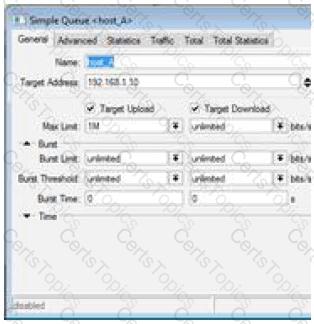The local PPP database in MikroTik allows control over authentication and access for PPP-based services such as PPTP, L2TP, PPPoE, and SSTP. Several configuration options can be specified per user or profile.
A.✔Correct – You can use the "only-one" setting in PPP profiles to allow/deny multiple logins for the same user.
B.✔Correct – Under the "service" parameter in /ppp secret, you can restrict allowed protocols (e.g., enable PPPoE, PPTP, and disable L2TP).
C.✘Incorrect – Data transfer limits (Rx/Tx) are not enforced directly in PPP profiles or secrets. This is usually handled via queues or hotspot limitations.
D.✔Correct – By setting the "service" to only "pppoe", all other PPP types will be denied.
E.✘Incorrect – Access to services like telnet is managed via firewall rules or user groups, not in PPP profiles.
Extract from Official MTCNA Course Material – PPP Profiles:
“PPP Profiles control session parameters. You can limit simultaneous logins, restrict service types (e.g., PPPoE), and set IP pools.”
Extract from René Meneses MTCNA Study Guide – PPP Configuration:
“Use the ‘only-one’ flag to control concurrent logins. The ‘service’ field allows or restricts protocol types per user.”
Extract from Terry Combs MTCNA Notes – PPP Features:
“To allow a user access only via PPPoE or PPTP, adjust the service types in /ppp secret.”
===========
